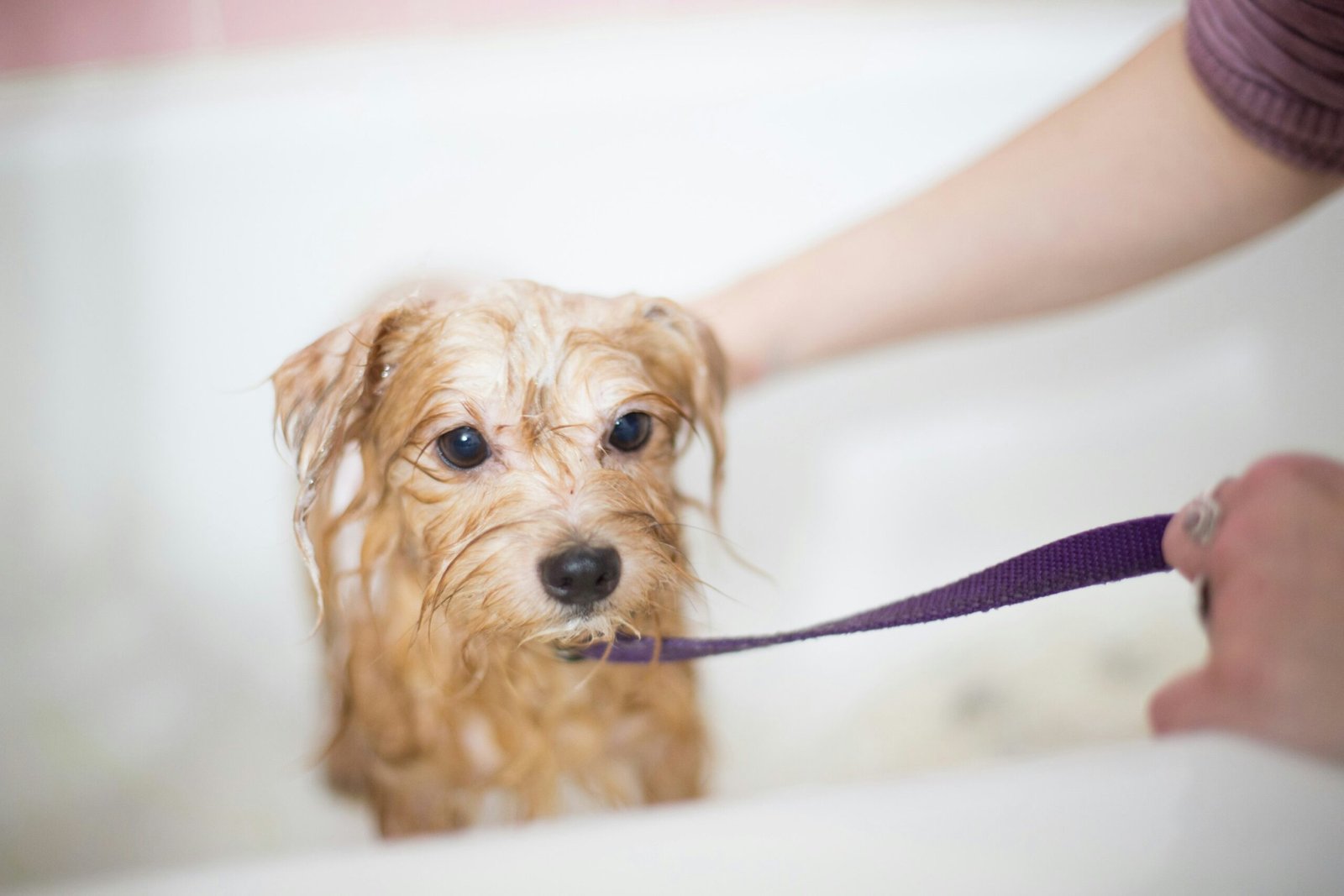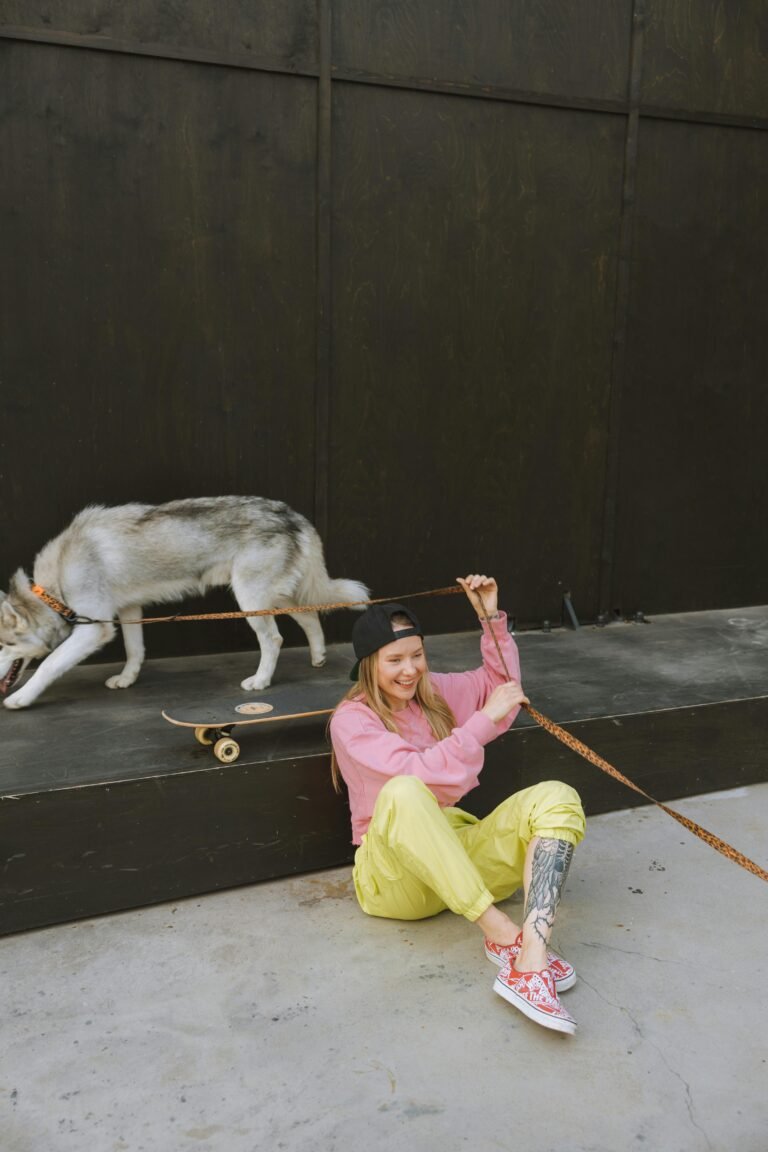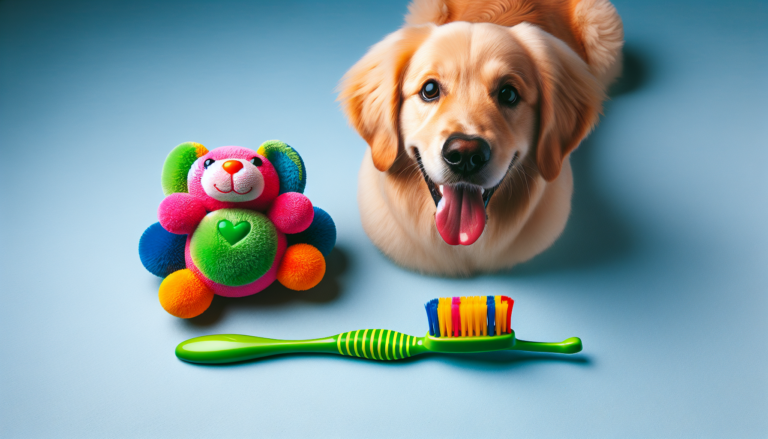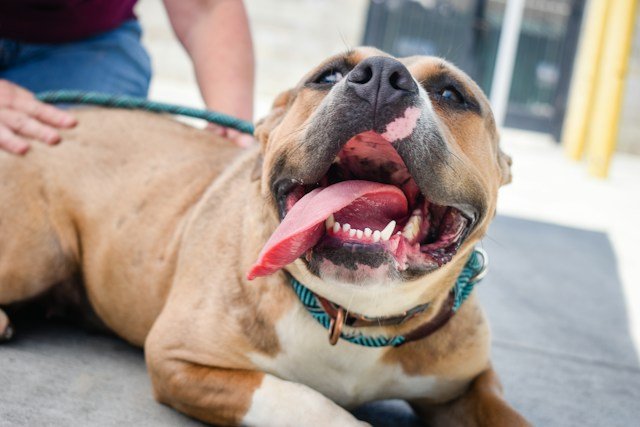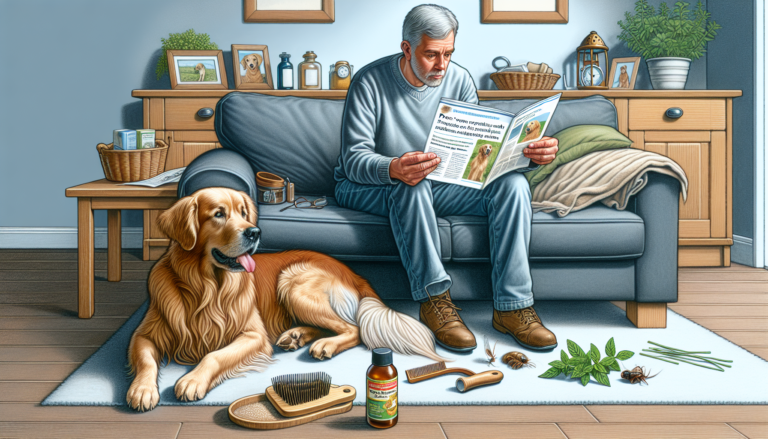Beginner’s Guide To Dog Grooming
In the “Beginner’s Guide to Dog Grooming,” you will discover all the essential tips and tricks to keep your furry friend looking their best. Whether you are a novice to dog grooming or just looking for a refresher, this comprehensive guide will take you through the step-by-step process of grooming your canine companion. From brushing and bathing to trimming their nails and cleaning their ears, you’ll find everything you need to know to ensure your dog is pampered and well-maintained. Get ready to unleash your inner grooming guru and embark on a journey of bonding and beautifying your precious pup!
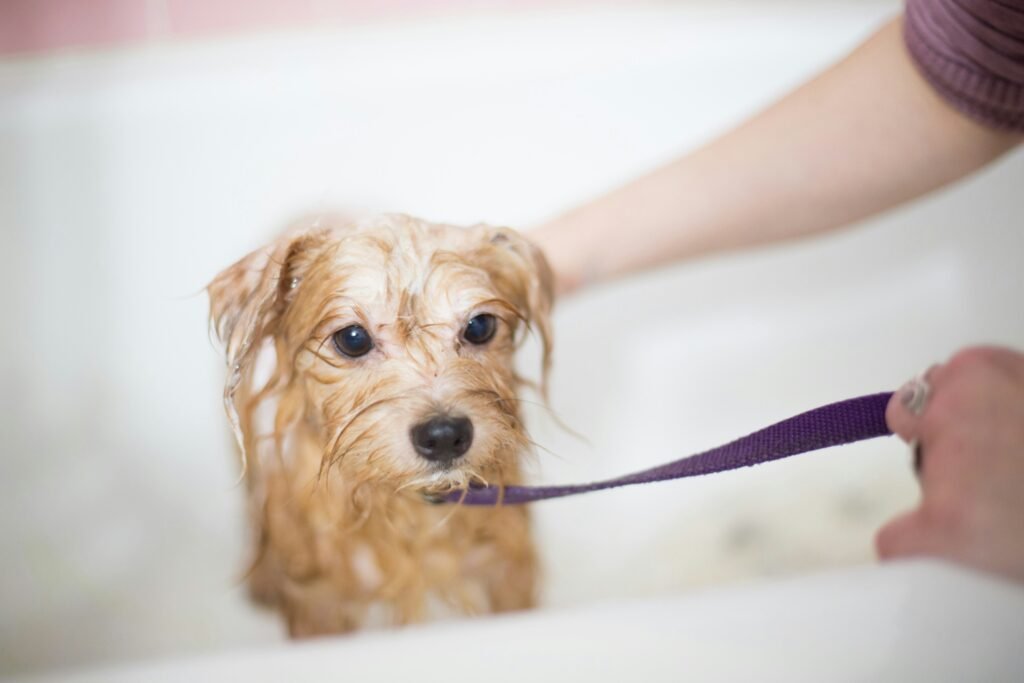
Bathing
Bathing your dog is an important part of their grooming routine. It not only helps keep them clean and fresh, but it also promotes healthy skin and coat. When it comes to choosing the right dog shampoo, it’s essential to consider your dog’s specific needs. There are shampoos designed for different coat types, such as dry, sensitive, or oily. It’s best to consult with your veterinarian or a professional groomer to determine the most suitable shampoo for your furry friend.
Before bathing your dog, it’s crucial to prepare the bathing area to ensure a smooth and safe experience. Choose a location with a non-slip surface, such as a bathtub or a designated dog washing area. Gather all the necessary supplies, such as shampoo, towels, and a handheld sprayer. Fill the tub with lukewarm water, making sure it’s not too hot or too cold for your dog’s comfort.
When it’s time to wash your dog, make sure to wet their coat thoroughly before applying shampoo. Use gentle, circular motions to work the shampoo into a lather. Be careful to avoid getting shampoo in their eyes, ears, or mouth. Pay extra attention to areas that tend to get dirty or oily, such as the belly, paws, and under the tail. Rinse your dog thoroughly to remove all the shampoo residue.
After bathing, it’s important to dry your dog properly to prevent them from getting chilled or developing skin irritations. Gently towel-dry their coat, absorbing as much moisture as possible. If your dog tolerates it well, you can use a hairdryer on a low heat setting to speed up the drying process. Make sure to keep the dryer at a safe distance to avoid overheating their skin.
Brushing
Regular brushing is essential for maintaining your dog’s coat and overall health. It helps remove loose fur, dirt, and tangles, preventing mats from forming. The type of brush you choose depends on your dog’s coat type. For short-haired dogs, a bristle brush or rubber grooming mitt is suitable. Long-haired dogs may require a slicker brush or a combination of a slicker brush and a wide-toothed comb.
When brushing different coat types, it’s important to use the right techniques. For a short-haired dog, use gentle strokes in the direction of hair growth to remove loose fur. For long-haired dogs, start by using a slicker brush to remove tangles and mats, then follow up with a wide-toothed comb to detangle and smooth the coat. Take your time and be patient, especially if your dog has sensitive areas.
The frequency of brushing depends on your dog’s coat and shedding pattern. Long-haired dogs typically require daily brushing to prevent tangles and mats. Short-haired dogs may require brushing once or twice a week to remove loose fur. Regular brushing also helps distribute natural oils, promoting a healthy and shiny coat.
If your dog has tangles or mats, it’s important to address them promptly. Use your fingers or a mat splitter to gently loosen the tangles. For stubborn mats, you may need to carefully cut them out using blunt-ended scissors. Be cautious not to cut your dog’s skin in the process. If the mats are severe or too difficult to manage, it’s best to seek professional help from a groomer.
Trimming the Nails
Trimming your dog’s nails is a crucial part of their grooming routine. Overgrown nails can be uncomfortable for your dog and may cause issues with their gait. Before trimming their nails, it’s essential to select the right nail clippers. There are various types available, including guillotine-style clippers and scissor-style clippers. Choose a clipper that feels comfortable in your hand and suits your dog’s nail size and thickness.
Getting your dog comfortable with nail trimming is important to ensure a stress-free experience. Start by getting them used to the sensation of having their paws touched. Gently hold your dog’s paw and touch their nails without applying pressure. Gradually increase the duration and frequency of these sessions, always rewarding your dog with treats and praise for their cooperation.
When it comes to trimming techniques, it’s crucial to avoid cutting into the quick, which is the sensitive tissue inside the nail. Trim small amounts of the nail at a time, preferably using a grinding tool or a nail file to smoothen the edges. If you’re unsure about how short to trim, it’s better to err on the side of caution and trim less rather than risk cutting into the quick.
In case of bleeding, don’t panic. It can happen if you accidentally cut into the quick. Apply gentle pressure using a clean cloth or styptic powder to help stop the bleeding. If the bleeding persists or your dog appears to be in pain, consult your veterinarian for further guidance.
Cleaning the Ears
Keeping your dog’s ears clean is crucial for preventing ear infections and other potential issues. Regularly inspecting the ears can help you identify any redness, swelling, or discharge that may indicate a problem. When it comes to choosing an ear cleaning solution, it’s best to opt for a veterinarian-recommended product specifically formulated for dogs.
To clean your dog’s ears, start by gently lifting their earflap and inspecting the visible areas. If you notice any debris or dirt, you can use a cotton ball or a soft, damp cloth to wipe it away. It’s important to avoid inserting anything deep into your dog’s ear canal, as this can cause harm and potentially damage their hearing.
For deeper cleaning, follow the instructions on the ear cleaning solution. Typically, you’ll need to apply a few drops of the solution into the ear canal, gently massage the base of the ear to distribute the solution, and then allow your dog to shake their head to remove any loosened debris. Use a clean cotton ball or cloth to wipe away any remaining solution and debris from the outer ear.
Preventing ear infections can be achieved by regularly cleaning your dog’s ears and ensuring they are kept dry. If your dog frequently swims or has floppy ears that trap moisture, it may be necessary to clean their ears more frequently. If you notice any signs of infection, such as a foul odor, excessive scratching, or discharge, consult your veterinarian for a proper diagnosis and treatment plan.
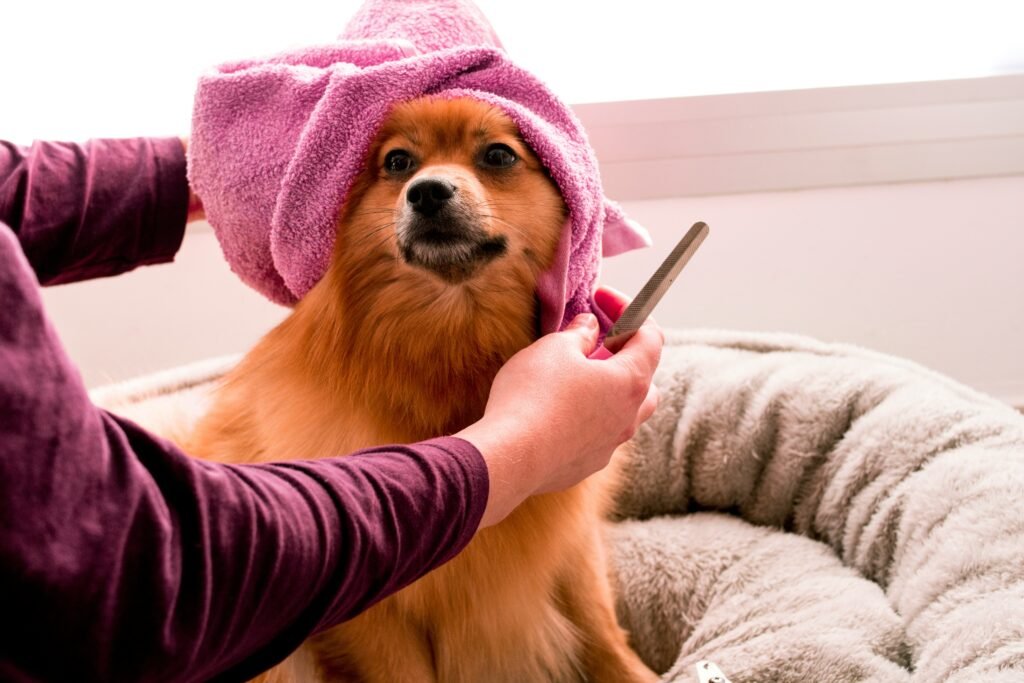
Brushing the Teeth
Maintaining good dental hygiene for your dog is essential for their overall health. Choosing the right dog toothbrush and toothpaste can make the brushing experience more comfortable for you and your furry friend. Use a soft-bristled toothbrush that is specifically designed for dogs and a toothpaste that is safe for them to swallow. Avoid using human toothpaste, as it can be harmful if ingested.
Getting your dog used to toothbrushing may take some time and patience. Start by letting them get familiar with the toothbrush and toothpaste by allowing them to sniff and lick them. Gradually introduce the toothbrush by gently rubbing it against their teeth and gums. Make sure to reward your dog with praise and treats for their cooperation.
Once your dog is accustomed to the toothbrushing process, you can start using proper brushing techniques. Hold the toothbrush at a 45-degree angle to the gumline and brush in gentle, circular motions. Pay attention to the outer surfaces of the teeth, as this is where plaque and tartar tend to accumulate. Take your time and be thorough, ensuring you brush all the teeth in your dog’s mouth.
Preventing dental problems can be achieved through regular toothbrushing, a balanced diet, and appropriate dental treats or chew toys. It’s important to establish a routine and brush your dog’s teeth at least two to three times a week. Regular dental check-ups with your veterinarian are also recommended to address any potential issues and ensure optimal dental health for your dog.
Grooming the Eyes
Cleaning the area around your dog’s eyes is crucial for their hygiene and overall appearance. Some dogs, especially those with certain breeds, tend to develop tear stains around their eyes. These stains can be unsightly and may require special attention to keep your dog looking their best.
To clean the area around your dog’s eyes, use a soft, damp cloth or a gentle eye wipe specifically formulated for dogs. Gently wipe the area, starting from the inner corner and moving towards the outer corner. Be careful not to get any solution or moisture directly into your dog’s eyes, as it may cause irritation.
If your dog develops tear stains, you can consider using tear stain removers or products specifically designed to reduce tear staining. These products often contain mild ingredients that help break down the stains and prevent them from recurring. It’s important to follow the instructions and avoid using any product that may be harmful to your dog’s eyes or skin.
Preventing eye infections can be achieved by keeping the area around your dog’s eyes clean and dry. Regularly inspect the eyes for any signs of redness, discharge, or excessive tearing. If you notice any abnormalities or your dog shows signs of discomfort, consult your veterinarian for proper diagnosis and treatment.
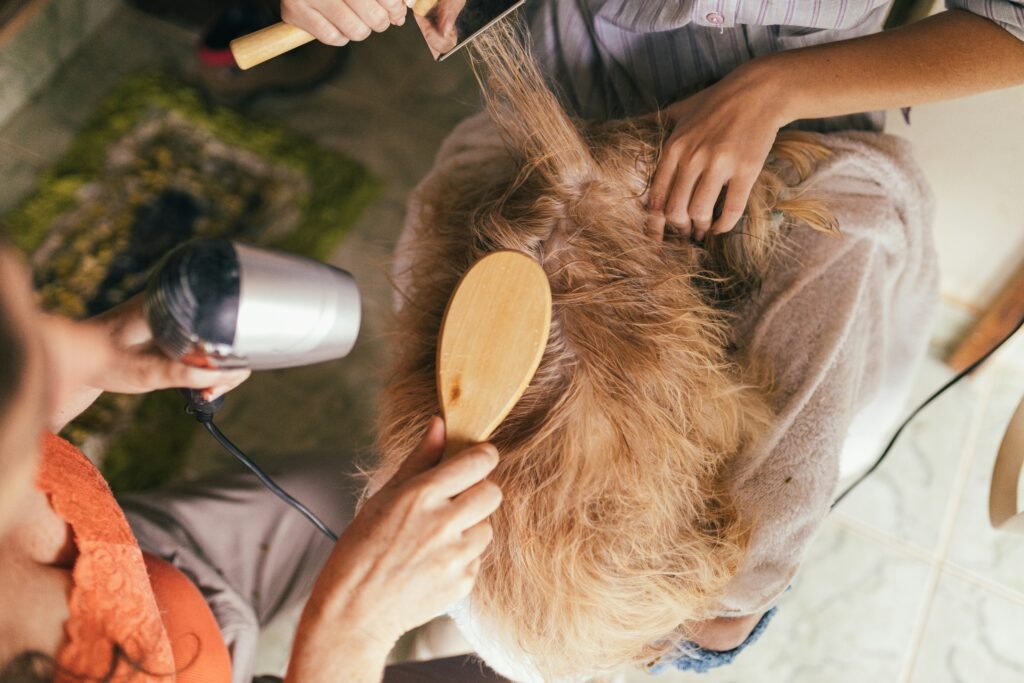
Trimming the Hair
Trimming your dog’s hair is an essential part of their grooming routine, especially for breeds with fast-growing or curly coats. Determining the right haircut for your dog depends on their breed, coat type, and your personal preferences. It’s always a good idea to consult with a professional groomer for guidance, especially if you’re unsure about the best approach.
Using the appropriate grooming tools is crucial for achieving a neat and even haircut. Clippers or scissors specifically designed for dog grooming are recommended. It’s important to choose tools that are safe and comfortable for both you and your dog. Electric clippers are often preferred for their ease of use and ability to handle different coat thicknesses.
When trimming different parts of the body, it’s important to use the right techniques. Start by brushing your dog’s coat thoroughly to remove any tangles or mats. Use clippers or scissors with caution, following the natural direction of hair growth. Take breaks as needed to prevent your dog from getting restless or uncomfortable. Trimming sensitive areas, such as around the eyes, ears, and paws, may require extra attention and care.
If you’re not confident in your ability to trim your dog’s hair, it’s best to seek professional help from a groomer. They have the experience and expertise to ensure a safe and aesthetically pleasing haircut for your furry friend.
Managing Shedding
Understanding your dog’s shedding cycle is crucial for effectively managing their shedding and keeping your home clean. Most dogs have a natural shedding pattern that can be influenced by factors such as breed, health, and season. Regular brushing and grooming can help reduce shedding by removing loose fur and preventing it from spreading all over your home.
Brushing and grooming your dog regularly is the most effective way to minimize shedding. Depending on your dog’s coat type, you may need to brush them once or twice a week or even on a daily basis. Use a brush specifically designed to remove loose fur, such as a slicker brush or a shedding blade. Brush in the direction of hair growth, applying gentle pressure to avoid causing discomfort to your dog.
Deshedding tools, such as undercoat rakes or deshedding gloves, can also be helpful in managing shedding. These tools are designed to remove the loose, dead hair from your dog’s undercoat without damaging their topcoat. It’s important to follow the instructions and use these tools with caution, avoiding excessive force or pressure on your dog’s skin.
Controlling allergens associated with shedding can be challenging, but there are steps you can take to minimize their impact. Regular vacuuming, especially in areas where your dog spends the most time, can help reduce the presence of allergens. Washing your dog’s bedding frequently and keeping their living environment clean can also contribute to a healthier, allergy-friendly home.
Maintaining Healthy Skin
Maintaining healthy skin is essential for your dog’s overall well-being. Choosing the right dog shampoo and conditioner can make a significant difference in their skin health. Look for shampoos and conditioners that are specifically formulated for dogs and suit your dog’s specific needs. There are products available for dry skin, sensitive skin, and even for addressing specific skin conditions, such as allergies or infections.
Regularly inspecting your dog’s skin can help you identify any potential issues, such as dryness, redness, or flakiness. If you notice any abnormalities, it’s important to consult with your veterinarian for proper diagnosis and treatment. They may recommend specific skincare products or treatments to address your dog’s individual needs.
Promoting good skin health through grooming is essential. Regular brushing helps remove dead skin cells and stimulates the production of natural oils, resulting in healthier skin. It’s important to choose the right brush for your dog’s coat type and use appropriate techniques to avoid causing skin irritation. Following a balanced diet and ensuring your dog stays hydrated also contribute to good skin health.
If you have concerns about your dog’s skin, such as persistent dryness, itching, or odor, it’s important to consult your veterinarian. They can conduct a thorough examination and recommend appropriate steps to address any underlying issues.
Dealing with Common Coat Problems
As a dog owner, it’s important to be aware of common coat problems and how to address them. Preventing and treating fleas and ticks is crucial for your dog’s comfort and health. Consult with your veterinarian about safe and effective flea and tick prevention products. Regularly inspect your dog’s coat for signs of infestation and use appropriate treatments as directed.
Excessive shedding can be a common concern for many dog owners. If you notice that your dog is shedding more than usual, it’s important to address any underlying factors. Regular grooming and brushing can help minimize shedding by removing loose fur. If excessive shedding persists, it may be a sign of an underlying health issue, and it’s important to consult your veterinarian for proper diagnosis and treatment.
Handling a dry or oily coat requires specific care. For dogs with dry skin, using a moisturizing shampoo and conditioner can help restore moisture and alleviate flakiness. Avoid bathing your dog too frequently, as it can strip their skin of natural oils. If your dog has an oily coat, you may need to bathe them more frequently using a shampoo specifically formulated for oily coats. Be careful not to over-bathe, as it can lead to an imbalance in the skin’s natural oils.
Dealing with skin allergies can be challenging, but identifying the triggers and seeking appropriate treatment can help manage the symptoms. Consult with your veterinarian for proper diagnosis and guidance. They may recommend hypoallergenic shampoos, dietary changes, or other treatments depending on your dog’s specific needs.
In conclusion, dog grooming is an essential part of caring for your furry friend. Bathing, brushing, trimming nails, cleaning the ears, brushing teeth, grooming the eyes, trimming the hair, managing shedding, maintaining healthy skin, and dealing with common coat problems are all important aspects of dog grooming. By following proper grooming techniques and establishing a regular routine, you can help keep your dog clean, healthy, and looking their best. Remember to always approach grooming with patience, love, and gentle care to ensure a positive experience for both you and your beloved canine companion.

